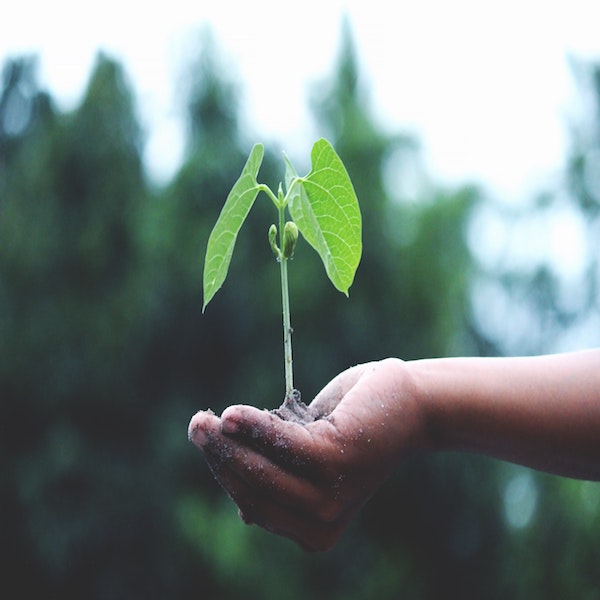What Are the Effects of Iron on Plant Growth?
•Posted on September 13 2019

What is Iron?
Iron, the 26th element in the periodic table, is one of 16 vital elements that are necessary for plants to grow and be healthy.
While most people may think of iron as the tough, rust-prone material in their cast iron skillets, actually iron comes in various forms.
Plants can make use of some of them, but in many types of soil, plants need a little help to be able to get the iron they need.
What is the Function of Iron in Plants?

Where plants are concerned, iron is a micronutrient — but even though it's only required in small doses, it's still incredibly necessary.
Why? Because a plant can't produce chlorophyll without iron.
Without chlorophyll, the plant can't metabolize oxygen — and that's a big problem.
Why Does Iron Matter for Plant Health?
Just like it does in the human body, iron helps carry other crucial elements throughout plants' circulatory systems.
Chief among these is oxygen.
Iron helps the plant move oxygen throughout the roots, leaves, and other parts of the plant, producing the green color that lets you know your plant is healthy.
Many plants also rely on iron to complete the enzyme functions that keep the plant thriving.
What Happens When Plants Don't Receive Enough Iron?

Even though plants only need a tiny amount of iron, when it's missing, the results can be disastrous.
Most often, iron deficiency manifests through chlorosis.
This is the name for the condition in which new leaves are yellow rather than green, though they typically still show green veins.
The yellow color is caused by that lack of oxygen transport, caused by the iron insufficiency.
Without iron, the plant's leaves don't receive the oxygen they need. Without the oxygen, they can't produce sufficient chlorophyll.
Without chlorophyll, the green color is lacking.
If iron deficiency continues, older leaves will also start to show chlorosis, turning yellow.
From there, the condition can proceed, resulting in leaf loss as well as poor overall growth until eventually, the plant dies.
What Are Good Sources of Iron?

To repair your plants' iron deficiency, start by determining the cause of the problem.
You may have enough iron in your soil, but other factors can make that iron unavailable to your plants.
Levels of carbon, salt, phosphorus, calcium, and other elements can affect plants' ability to intake iron.
Soil moisture and low temperatures can also become factors in iron deficiency.
You may want to start by spraying iron (either chelated iron or a liquid iron sulfate spray) on your plants to give them a little boost of what they need.
This isn't a long-term solution, though — only a quick fix. Your long-term solution rests with treating your soil.
Test your soil's pH next. If it's higher than 7, correcting the pH may make it easier for your plants to uptake the nutrients they need, including iron.
Most likely, though, the mineral balance in your soil is incorrect. Clay soils are particularly prone to this problem, and certain plants are more susceptible to it than others.
Keep an eye on iron levels particularly if you're growing holly, azaleas, and rhododendrons, as well as blueberries and oak trees of all types.
Treating the soil is the ultimate solution to iron deficiency. Chelated iron is by far the most useful amendment to your soil for this problem.
If you're using an iron-rich fertilizer, read the ingredients to make sure it doesn't contain phosphorus, since an overabundance of phosphorus can contribute to chlorosis issues.
We recommend Chelated Iron DTPA, Chelated Iron EDTA, and Ferrous Sulfate fertilizers as solutions for iron deficiency.
Shop our iron rich fertilizers below if your plants are showing signs of chlorosis or other iron-related issues.
Related Posts:
- The 5 Fertilizers That Will Also Encourage Soil Health
- What's the Function of Calcium in Plants?
- What's the Function of Potassium in Plants?
- What's the Function of Nitrogen in Plants?
Comments
2 Comments
-

Posted by Anonymous | September 16, 2019
-

Posted by Robert Williams | September 16, 2019
Leave a CommentRobert: Thank you for your comment! You very well may have an iron deficiency if you’ve eliminated other possible causes, however, we strongly recommend conducting a soil test to be more sure of the exact deficiency present in your soil. Please let us know if we can help any further!
I have 1 of 12 pecan trees that the leaves start to turn brown earlier that the other trees. They are all treated with the same fertilizer, fungicide and pesticide every year for the past two years. I even treated this particular tree with zinc EDTA foliar spray thinking the problem was lack of photosynthesis. Not much help, though. Maybe iron is the problem?